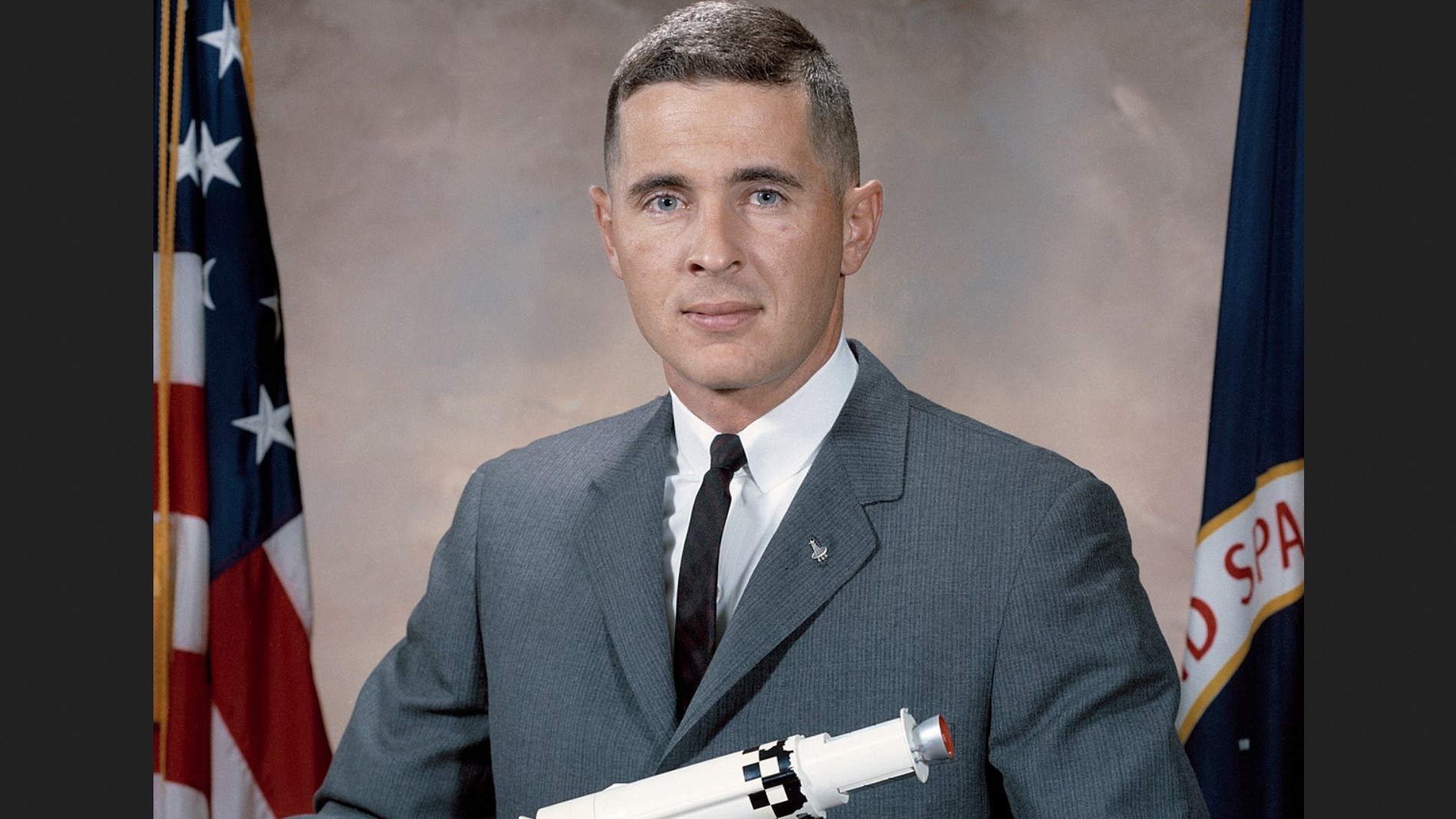

William Anders, Air Force pilot, diplomat, nuclear engineer and astronaut who was one of the first three people to orbit the Moon as part of the Apollo 8 mission, died Friday, June 7 when his plane crashed into the waters off the coast of Washington state. He was 90.
The San Juan County Sheriff’s Office reported that a small plane, a T-34, had crashed in the waters near Jones Island, shortly before 11:40 a.m. The pilot was confirmed dead and Anders’ son Greg Anders confirmed his father was the one in the plane. The National Transportation Safety Board and Federal Aviation Authority are investigating the crash. Anders was the only person in the plane and the only one killed by the crash.

William Anders, born Oct. 17, 1933 in Hong Kong, was part of the three-man crew of the Apollo 8 mission in 1968, where he, Jim Lovell and Frank Borman became the first humans to reach the Moon and enter lunar orbit. During the mission Anders took one of the most iconic photographs of the Space Race, “Earthrise,” showing the planet rising above the Moon’s horizon.
“In 1968, during Apollo 8, Bill Anders offered to humanity among the deepest of gifts an astronaut can give,” NASA Administrator Bill Nelson wrote on X. “He traveled to the threshold of the Moon and helped all of us see something else: ourselves. He embodied the lessons and the purpose of exploration. We will miss him.”
Anders graduated the U.S. Naval Academy in 1955, was commissioned in the U.S. Air Force and became a fighter pilot under Air Defense Command, piloting interceptor missions in while stationed in California and Iceland. He flew F-89 Scorpions, armed with nuclear air-to-air missiles, a sign of the intensity of the Cold War. He pursued becoming a test pilot, earning a masters degree in nuclear engineering and applying to become a NASA astronaut.

In 1963 he was selected as part of the third batch of NASA astronauts, dubbed “The Fourteen.” He worked in the Gemini program, serving as a backup for the penultimate Gemini 11 mission, and the Apollo program. Anders, along with Lovell and Borman, were chosen for Apollo 8, set for December 1968.
Anders would note that Apollo 8 was supposed to have a lunar module but that was excised before the mission, leaving them focused on testing the command module.
Apollo 8 launched on Dec. 21, 1968, the first crewed mission to use the Saturn V rocket. They successfully traveled to the Moon, becoming the first humans to orbit the lunar surface. They would orbit it 10 times, giving a widely viewed broadcast to Earth on Christmas Eve. Anders would later note that he had calculated “a one-in-three chance of returning from a successful mission safely.” Thankfully the odds were in the crew’s favor. The trio returned to Earth on Dec. 27.
After Apollo 8, Anders stuck with NASA — he was part of the backup crew for Apollo 11 — but quickly became heavily involved in space and nuclear policy. He headed the National Aeronautics and Space Council from 1969-1973, served on the Atomic Energy Commission and was the head American on a joint United States-Soviet Union nuclear technology exchange. Along the way he worked as a diplomat, serving as the American ambassador to Norway from 1976-1977.
Subscribe to Task & Purpose Today. Get the latest military news and culture in your inbox daily.
For all of his achievements, Anders’ most iconic work is a photograph. “Earthrise,” taken Dec. 24, 1968. Taken using 70mm color film, it captured the Earth in the distance, a colorful ball partially obscured in darkness. Decades later, Anders would write that the sight showed the planet “was small and delicate, a magnificent spot of color in the vast blackness of space. Once-distant places appeared inseparably close. Borders that once rendered division vanished. All of humanity appeared joined together on this glorious-but-fragile sphere.”
“We’d been going backwards and upside down, didn’t really see the Earth or the Sun, and when we rolled around and came around and saw the first Earth rise. [T]hat certainly was, by far, the most impressive thing,” Anders said in 1997. “To see this very delicate, colorful orb which to me looked like a Christmas tree ornament coming up over this very stark, ugly lunar landscape really contrasted…”

Anders is the second of the three Apollo 8 astronauts to die. Frank Borman passed away Nov. 7, 2023. Only Jim Lovell — who also was the commander during Apollo 13 — remains.
After his time in the public sector, Anders spent the rest of his career in high level roles at General Electric and Textron. He joined defense contractor General Dynamics in 1990, becoming chairman and CEO a year later,
Anders had remained a reserve officer in the Air Force. When he fully retired from the military in 1988, he had reached the rank of major general. William Anders retired from General Dynamics as CEO in 1993 and as chairman in 1994. He and his wife Valerie moved to the Orcas Islands, founding the Heritage Flight Museum in 1996. Anders would collect vintage aircraft, with the help of his former crew mate Borman. He even took up racing planes during the 1990s. According to local reports, the plane he was flying when he crashed was owned by his museum.
In 2018, 50 years after he orbited the Moon, Anders reflected on the legacy of Apollo 8 and “Earthrise.”
“We set out to explore the moon and instead discovered the Earth.”
The latest on Task & Purpose
- Marines will land on Normandy beaches to commemorate D-Day’s 80th anniversary
- Air Force raises maximum amount for retention bonuses to $180,000
- Former Admiral’s $500,000 retirement job was a bribe, prosecutors say
- Army special operations officer under investigation after shooting
- Meet the soldier who is taking the Army combatives scene by storm